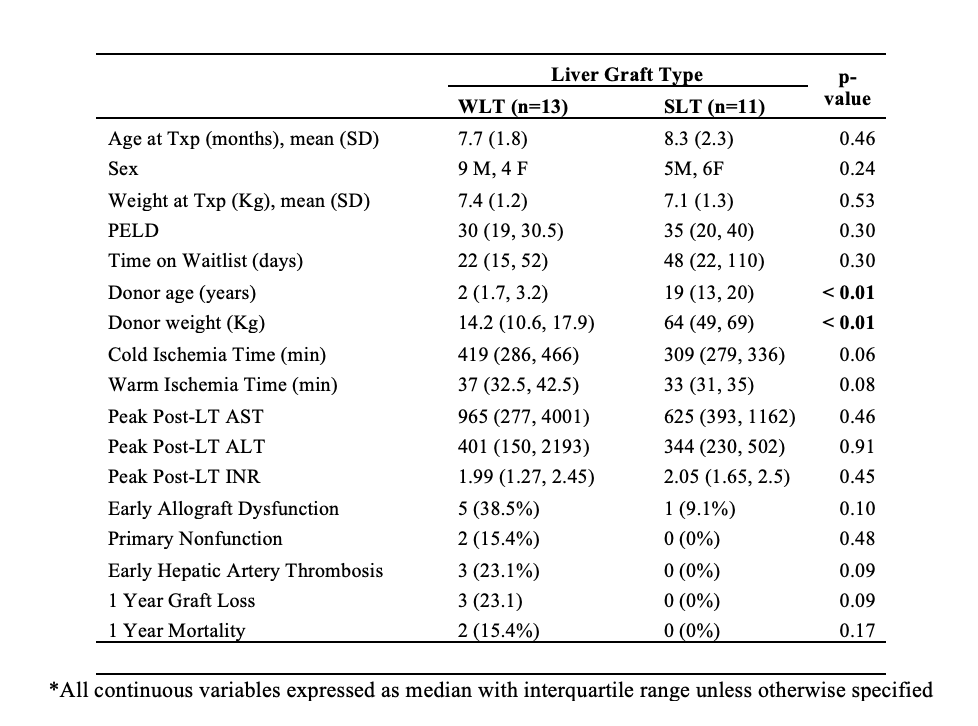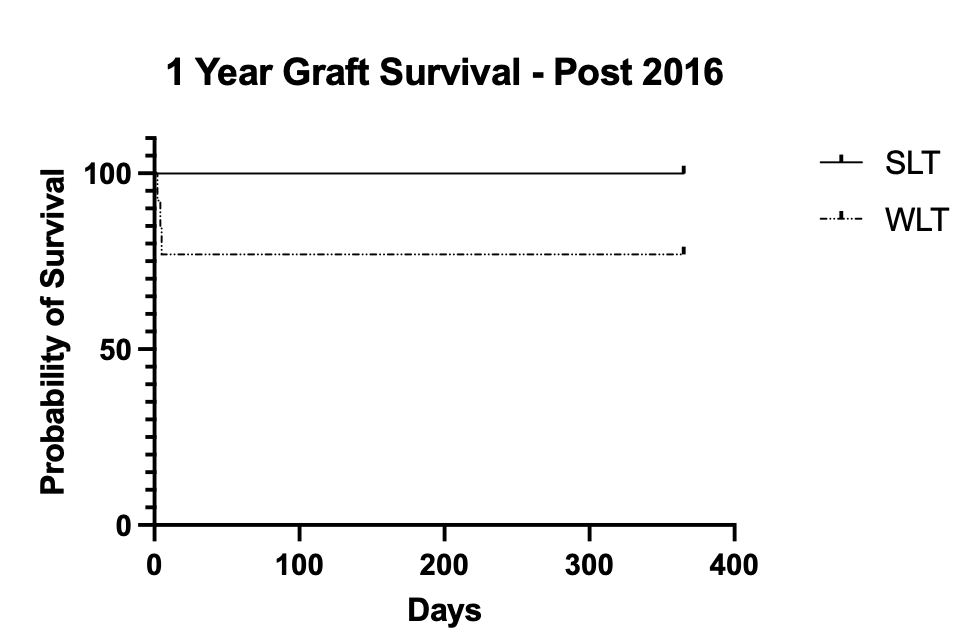Zachary P. Rokop, United States
Resident
Department of Surgery
Indiana University School of Medicine
Comparative analysis of whole vs. split deceased donor liver transplantation in infants
Zachary Rokop1, Chandrashekhar Kubal1, Burcin Ekser1, Plamen Mihaylov1, Jonathan Fridell1, Kyla Tolliver2, Jean Molleston2, Richard Mangus1.
1Department of Surgery, Indiana University School of Medicine, Indianapolis, IN, United States; 2Department of Pediatric Gastroenterology, Indiana University School of Medicine, Indianapolis, IN, United States
Background: Liver transplantation (LT) in infants can be challenging due to small size and small vasculature. Although both whole LT (WLT) and split LT (SLT) have been described in these patients, head-to-head comparison of these techniques is lacking, especially in infants [1,2].
Methods: We retrospectively analyzed the records of all patients with age < 1 year at Indiana University School of Medicine between 2003 and 2022. In 2016, surgical technique was modified and majority of SLT (83%) were performed 2016 onwards. For this reason, a subgroup analysis was performed in LT between 2016 to 2022 (Era II) and early outcomes were compared. In Era II, all SLT were left lateral segment grafts split in-situ.
Results: A total of 38 infants were transplanted, with 23 WLT, 15 SLT. The median follow-up time was 51.2 months. For the entire cohort, one-year patient survival was 82% and 100% respectively, and one-year graft survival was 78.2% and 100% respectively. Era II included a total of 24 infants, with 13 WLT and 11 SLT. Donor and recipient characteristics and outcomes of Era II are summarized in Table 1. Early allograft dysfunction, primary nonfunction and hepatic artery thrombosis developed more frequently in the WLT group. One-year graft survival was numerically higher (100% vs. 77%; p=0.11) in the SLT group (Figure 1). There were two early deaths (2 & 4 days) in the WLT group; one from PNF and another from cardiogenic shock. There were no other biliary complications in this cohort.
Conclusions: In infants, left lateral segment SLT is associated with a trend towards superior outcomes as compared to WLT. Larger studies with homogeneous practices are required.


References:
[1] Hong JC, Yersiz H, Farmer DG, Duffy JP, Ghobrial RM, Nonthasoot B, Collins TE, Hiatt JR, Busuttil RW. Longterm outcomes for whole and segmental liver grafts in adult and pediatric liver transplant recipients: a 10-year comparative analysis of 2,988 cases. J Am Coll Surg. 2009 May;208(5):682-9
[2] Bowring MG, Massie AB, Schwarz KB, Cameron AM, King EA, Segev DL, Mogul DB. Survival Benefit of Split-Liver Transplantation for Pediatric and Adult Candidates. Liver Transpl. 2022 Jun;28(6):969-982
Lectures by Zachary P. Rokop
| When | Session | Talk Title | Room |
|---|---|---|---|
|
Tue-28 09:10 - 10:10 |
Liver | Comparative analysis of whole vs. split deceased donor liver transplantation in infants | Hill Country AB |
